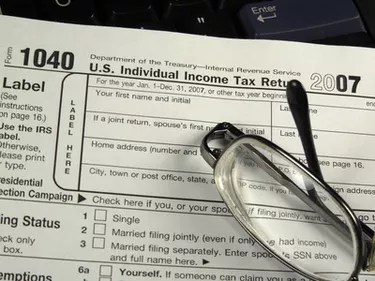
RMD stands for required minimum distribution. The Internal Revenue Service requires that people start taking distributions from their tax-deferred IRAs in the year that they turn 70 1/2 years old. However, if you inherit an IRA, the time frame for receiving required minimum distributions is based on when the deceased would have turned 70 1/2 rather than when you turned 70 1/2. For example, if you inherited an IRA from someone who died at age 68 1/2, even if you are only 30, you would have to start taking RMDs in 2 years because that is when the person would have been required to start taking distributions.
Step 1
Use the single life expectancy table to find the expected distribution period for your beneficiary IRA if the deceased was at least 70 1/2 years old. (If the deceased was not 70 1/2, you are not required to take RMDs.) On the table, locate your age under the "Age" heading and find the corresponding value under "Life Expectancy." For example, if you are 45, the life expectancy would be 38.8.
Video of the Day
Step 2
Contact your financial institution to find the value of your beneficiary IRA as of Dec. 31 of the previous year. You may also have this information in your financial records.
Step 3
Divide the value of your beneficiary IRA from the end of the previous year by your life expectancy to calculate your RMD. For example, if your beneficiary IRA is worth $80,000 and your life expectancy is 38.8 years, divide $80,000 by 38.8 to find that your RMD is $2,061.86.
Tip
If you inherit an IRA from your spouse, you have the option to roll the money into your IRA and not have it treated as a beneficiary IRA.
Warning
If you do not take your RMD, any unwithdrawn amount will be subject to a 50 percent penalty.
Things You'll Need
IRS single life expectancy table
Calculator
Video of the Day